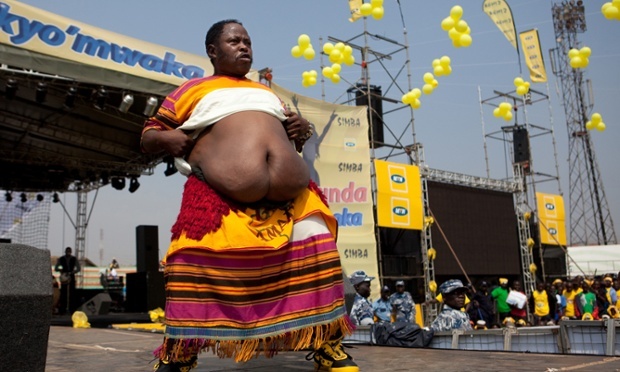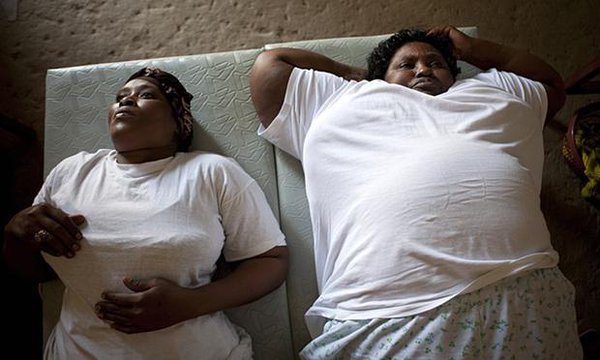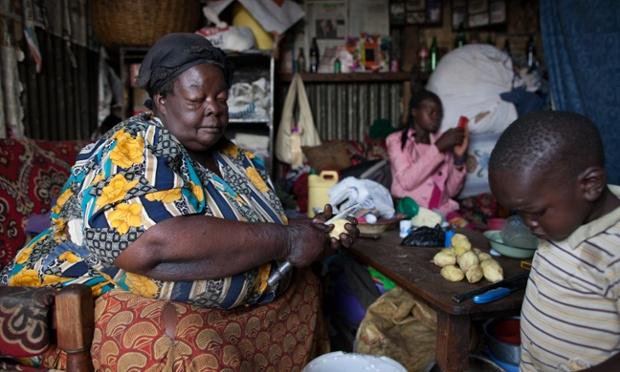
source
Over the last three decades, the number of people who are overweight or obese has greatly increased. More than a third of the world’s adult population is overweight. Oddly enough, the biggest rises have been in the developing world – such as sub-Saharan Africa – where people are also starving and malnourished. Two-thirds of the world’s overweight population reside is middle and low-income countries. The number of people who are overweight or obese in developing countries rose from 250 million to almost 1 billion, which is much higher than the rate of developed nations. This change is evident in South Africa.
Obesity is bringing negative consequences to South Africa
In 2014, The Guardian reported that South Africa has almost double the average global obesity rates and about two-thirds of the population are overweight. The World Health Organization’s 2014 estimate for the share of obese people in the country was 25.6%. This is also affecting children: more than a quarter of girls and almost one in five boys is overweight. Professor Tess Van der Merwe, president of the South African Society for Obesity and Metabolism, said:
“These are devastating figures, especially since it is such an expensive disease. We cannot afford to spend the next decade debating this issue. The obesity problem in our country is where the HIV epidemic was 10 years ago, when we turned a blind eye to the scale of the problem in terms of health economics and became the worst in the world in terms of outcomes.”
Obesity leads to diseases like cancer, cardiovascular disease, and diabetes. These ailments could surpass HIV and tuberculosis as the biggest causes of death in South Africa. This is a big concern as health care for these problems is expensive.

{adinserter CNP5}
Obesity and malnutrition are common in poorer areas
People living in poverty will, of course, buy the cheapest food possible. Cheap food is often unhealthy and does not provide the body with adequate nutrients. Zandile Mchiza, an expert with the Chronic Diseases of Lifestyle Unit at the Medical Research Council, said:
“In one household you can see children who are undernourished, the man with normal weight and then the wife who may be heavily overweight. This is why we have the issue of obesity coming up so strongly in Africa even while many people are still starving.”

Culture also plays a role
Mchiza added that culture may also be influencing the rising obesity. Being larger can be associated with wealth, happiness, beauty.
“The majority of black South African men prefer chubby women. If you are too thin it means your husband is not taking care of you or you are unhappy. And your children must be fat, too – we were force fed growing up, always told to eat up all our food and not waste anything on our plates,” he said.

It was caused by a shift in lifestyle and diet
Minister of Health Aaron Motsoaledi noted:
“It is weird when we are seeing malnutrition co-exist alongside obesity. I am not only sad but also alarmed, because of my medical training. In the next decade, many countries will not be able to afford their health costs, and this definitely includes South Africa.”
He believes the issue was created by a combination of a shift from rural to urban and higher consumption of western diets that are high in sugar, fat and salt. Essentially, people are eating worse and moving less.
“Thirty years ago black people in South Africa were eating produce from fields that was much healthier, and they were walking big distances. When I was a child pupils would walk 6km to school; some even walked 10km each way. Now life has changed and people do not want to walk anywhere,” he said.

SEE ALSO: 8 Foods and Drinks That You Should Stop Consuming.







